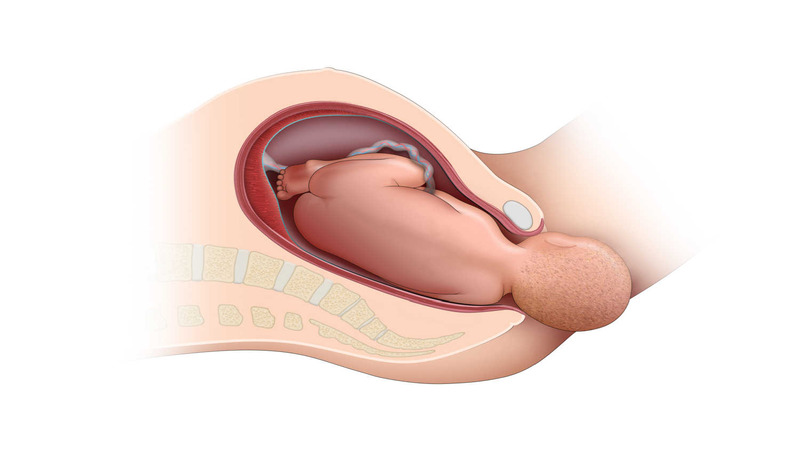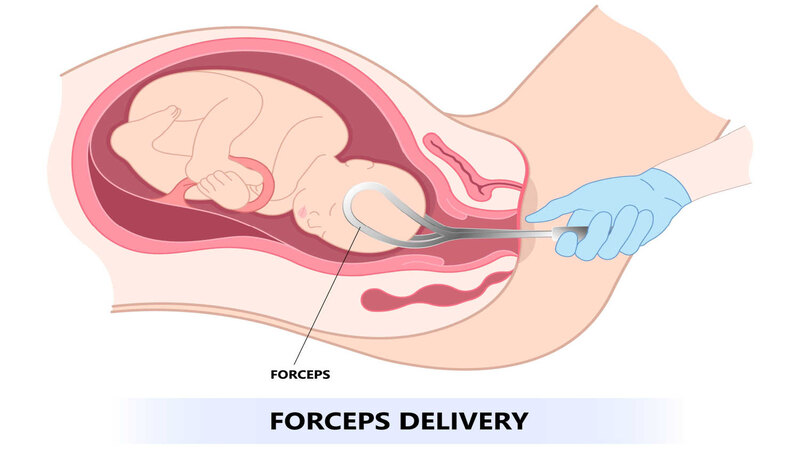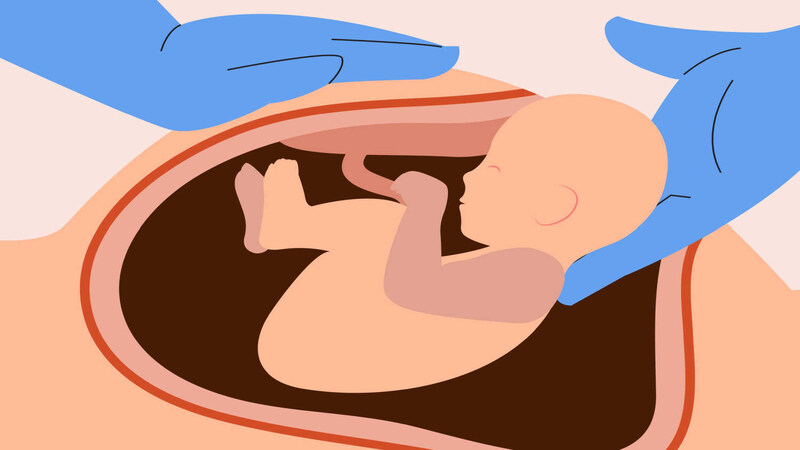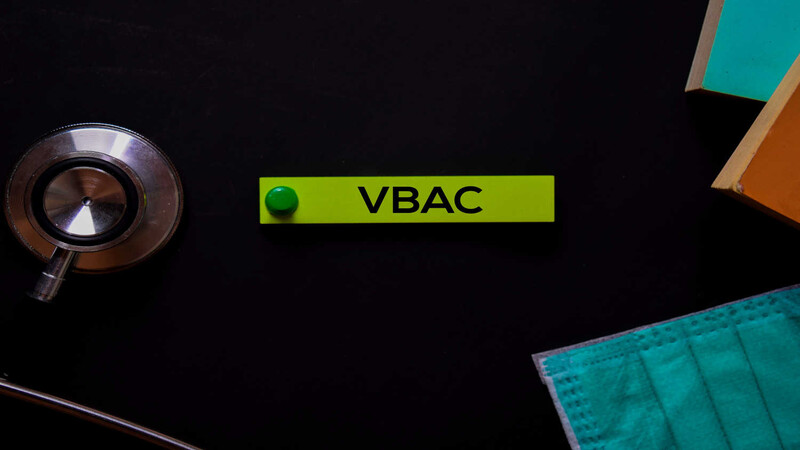
When you conceive, you are bound to hear a lot of details about the pregnancy itself, the morning sickness, weight gain, baby kicks, health issues, and more. Not everyone talks about D-day – your delivery day. Did you know there are more than 6 types of delivery methods when it comes to delivering your baby? Many women go into the labor ward to deliver their child without completely understanding the type of delivery method they have opted for.
The most commonly spoken about methods are vaginal delivery or cesarean delivery. However, there are more options when you want to deliver your baby. This article covers 6 different types of delivery methods you must know about, to make an informed choice (1).
Video of Different Types of Labor and Childbirth Methods
6 Different Types of Delivery Methods
 Contrary to popular belief, you can choose the type of delivery method you want to follow. Everyone mentions vaginal or natural birth to be the best method to deliver a baby. Did you know you have 5 options when it comes to vaginal birth alone? Come, let’s learn about the different types of giving birth (2).
Contrary to popular belief, you can choose the type of delivery method you want to follow. Everyone mentions vaginal or natural birth to be the best method to deliver a baby. Did you know you have 5 options when it comes to vaginal birth alone? Come, let’s learn about the different types of giving birth (2).
1. Natural Birth

This is the most commonly spoken about and sought-after method of delivery. It is natural and the recovery time is faster. In this method, the baby is born through your vagina. As painful as it may sound, it is the most recommended method, even by doctors.
A normal birth delivery can be split into three stages – labor, delivery of the baby, and delivery of the placenta. In this method, you can recover faster, reduce the chances of infection for both mother and baby, and is also the safest method for both mother and baby (3).
In a natural birth, the types of labor pregnancy are as follows:
a) Water Birth
Many women choose to give birth in water. In this method, a birth pool is filled with warm water. You will get into the water and the lower half of your body will remain in the water. Either the entire labor and delivery or part labor and delivery will happen in this birth pool. Water birth can lower the risk of vaginal tearing and improve blood circulation to the uterus. However, it’s important to consider the water birth pros and cons. Water birth also has a set of potential risks thus its always advisable to contact your healthcare professional before you create a perfect birthing plan (4).
Water birth can help to:-
- Reduce the labor time and provide relaxation during the delivery process
- Reduce the pain and complications related to delivery.
- Regulate the intensity of your contractions by adjusting the hormone levels during delivery.
- Offer buoyancy, which can reduce the pressure of contractions.
- Reduce vaginal tears.
- The birthing process becomes easier as it provides the same environment as that of the amniotic sac.
b) Lamaze Technique
In this method of childbirth, you will learn various coping mechanisms to confidently go through the delivery process. Lamaze is a breathing technique that can help you relax. As a result, your anxiety, heart rate, and perception of pain will all reduce. A Lamaze class can be a helpful course for you and your partner, as it can help answer the most anxious doubts about labor and delivery.
When you opt for this type of delivery, you may expect the following –
- Your doctor will wait for your labor to start on its own and won’t induce it
- You will receive ample support from your loved one or midwife
- You can get into whichever position is comfortable for you to give birth in
- There is no necessity for medications or treatments
- You can enjoy skin-to-skin contact with your baby soon after delivery
Choosing a Lamaze class is not a very difficult task. Consider factors such as instructor qualifications, class size, and location to ensure you find the best fit for your needs.
c) Hypnobirthing
If you want to reduce the delivery pain, you can try the Hypnobirthing process. It is a pain management technique that uses deep breathing, relaxation, and visualization techniques. In your Hypnobirthing class, you will learn (5)-
- To visualize your baby’s birth
- To meditate and focus on your body and labor rather than getting distracted
- Breathe in a controlled manner, which can help reduce the pain during labor and keep you calm.
Hypnobirthing is more to do with your mind. One can effectively use Hypnobirthing techniques through various practical methods. So, the experience will vary from person to person. It may work well for one and not so well for another.
d) Bradley Method Of Childbirth
Bradley’s childbirth classes mostly focus on relaxation for a normal birthing experience. But at the same time, it prepares couples mentally and physically for unexpected complications and cesarean deliveries. Here is a brief overview of what you learn in Bradley’s childbirth classes.
This is a 12-week course where you and your partner learn about exercises, a nutrition-rich diet, and the emotional bond between you and your partner when you are in labor. Generally, Bradley method of Natural Childbirth instructors conduct sessions at home, so women should feel comfortable asking queries and practicing safely in a home environment.3 Relaxation Techniques in Bradley’s Method helps women to focus on relaxation for a normal birthing experience
[Read: Considering a Home Birth]
2. Vaginal Birth

Vaginal birth is also natural birth. But here, you may sometimes need medication to induce your contractions and ripen your cervix. The cervical length plays an important role in delivery. Along with assessing the cervical length, doctors may recommend a membrane sweep if you have been in labor for a long time without any progress in cervical dilation.
In this mode of delivery, you have a choice to choose pain medications like epidurals. Doctors will keep an eye on you and put you on medication if they see the need. Epidurals during childbirth are commonly used to manage pain and can significantly ease the discomfort of labor. Always discuss with your healthcare provider to understand the benefits and potential risks (6).
Here are the two major delivery types in pregnancy for vaginal births –
a) Induced Vaginal Delivery
In an induced vaginal delivery, the doctor will use drugs like pitocin or techniques like using Entonox to induce your labor. To induce labor the obstetrician might use drugs like cerviprime gel which is prostaglandin, oxytocin can also be started but only after the cervical dilatation reaches 4cm. Pitocin is a synthetic counterpart of oxytocin hormone that is used for artificially inducing labor or making the process of labor quicker. Whereas, Entonox reduces the tension and anxiety of the patient during the delivery process. If you have any medical conditions or are past your due date, the doctor will induce labor using any of the 6 extensive methods to induce labor and help ripen your cervix for delivery.
b) Natural Vaginal Delivery
Vaginal delivery is the most natural method to deliver a baby. The contractions start on their own at around 39 – 40 weeks. A baby is declared full-term once they complete 37 weeks. So, you can expect your contractions to start any time after that. If everything progresses as expected, the doctor will not interfere in the delivery process and let it happen as naturally as possible. You must know some easy and simple techniques to facilitate the management of natural labor pains.
Vaginal birth like natural birth reduces the chances of complications in you and the baby to a greater extent and the recovery will be faster.
3. Assisted Vaginal Birth

Even if you are delivering through your vagina, sometimes you might need some extra help to deliver the baby. Your midwife or doctor will assist your delivery with tools or equipment to ensure the baby is delivered safely and sound (7).
This is completely unplanned and is usually a decision taken by your doctor in the final stages of delivery. Assisted vaginal delivery is done when it is seen that the baby’s heart rate is falling, there is caput formation, the baby is not moving down even after 30 mins and the mother is giving a full push. The need for assisted vaginal birth delivery methods arises when the labor is prolonged and tiring, particularly in the first delivery.
a) Forceps
Forceps are long surgical tools that look like tongs. When the baby is unable to come out through the vagina on their own, the doctor will use the forceps to gently grab and pull the baby out.
b) Vacuum
In Vacuum-assisted birth method, the doctor will use a small suction cup on the baby’s head, to help pull the baby out of the vagina. The suction cup is attached to a pump that will gently pull your baby as you push them out (8).
c) Ventouse
Also known as vacuum extraction, this method is used in the second stage of labor. If the baby is unable to progress down the birth canal, your doctor might use this method, provided the baby is not in a breech position or premature.
4. C-Section

In a C-section delivery, your obstetrician will deliver your baby by making surgical incisions in your abdomen and uterus. Cesarean delivery is often associated with many complications.
While it is not as safe as a vaginal delivery and has the risk of infections, blood loss, and injury to the bowel or bladder, and takes more time to recover, it is not a bad choice. It can reduce the risk of oxygen deprivation for the baby, reduce the trauma of the baby passing through the vagina, and also ensure the safe delivery of the baby in case of complications (9).
[Read: 10 Most Common Reasons Of A Cesarean Delivery]
A C-section delivery can be either planned, unplanned, or emergency, unlike a vaginal delivery.
a) Planned C-Section
You can plan to deliver your baby through a planned C-section delivery if you
- Had previously delivered via C-section
- Are suffering from placenta previa
- Are carrying more than one baby
- Have a breech baby
- Your baby is large
- Have obstructions like uterine fibroids
[Read: Tips to Choose The Right Hospital For Delivery]
b) Unplanned C-section
Sometimes, your labor plan changes. You may have to deliver your baby through an unplanned C-section if
- The baby is in distress
- Your labor is not progressing as expected
- You have gone through Antepartum hemorrhage a rare bleeding excessively
- The umbilical cord prolapse
- You have placental abruption
c) Emergency C-Section
Emergency C-section is recommended when the doctor feels that you or your baby are unsafe and immediate delivery through a C-section is the only way out. It can happen due to a sudden rise in blood pressure, loss of amniotic fluid, or even if the baby is in distress during labor. The amniotic fluid is very important for fetal growth and development. The time frame, Method of Anaesthesia, and Recovery time all are different in the case of Emergency c-section. Here are some 8 common reasons for an emergency C-section:
- Fetal Distress
- Cephalopelvic Disproportion
- Uterine Rupture
- Mother is Too Tired
- Prolapsed Umbilical Cord
- Delay in Dilation
- Placental Abruption
- Failure of Labor to Progress
5. VBAC (Vaginal Birth After C-Section)

There is a common misconception that once you deliver via a C-section, your following deliveries will be cesarean births as well. You can deliver your baby vaginally after a previous cesarean delivery.
However, not all doctors agree to this birth plan. So, it is best to consider the factors that affect a VBAC delivery with your doctor and choose a doctor who is experienced in such deliveries. The reason why many women or doctors don’t opt for a VBAC is the risk of a uterine rupture (10).
It is common knowledge that labor can put a lot of pressure on your uterus, especially when you are pushing your baby out. In a VBAC, there is a risk of your C-section scar opening up. This can happen if the pressure is too much, your baby is bigger or the incision was not done the ideal way.
You can opt for a VBAC, provided
- Your cesarean incision is low and transverse
- You don’t have any other scars or abnormalities in your uterus
- You didn’t suffer a uterine rupture
6. Lotus Birth

This is a not-so-common delivery method that is gaining a lot of awareness in recent times. In a lotus birth, you will deliver your baby and not cut the umbilical cord from the placenta. Lotus birth is a vaginal birth. So, you will deliver the baby and the placenta. However, after delivering your baby, the umbilical cord will stay attached to the placenta. You will deliver the placenta and it will remain attached to your baby until it dries off (11).
In most cases, women opt for this method, for spiritual reasons. Some people believe cutting off the umbilical cord soon after birth will prevent the baby from getting all the blood that is still in the cord from mother to baby. Once your placenta comes out of your womb, it will not have any blood supply which increases the risks of infections for your baby.
Delivering a baby can be both a stressful and an exciting time. If you know how you want to deliver your baby, you can mentally be ready to face the demands of the delivery. However, when it comes to the delivery of a child, one cannot predict if you will deliver only as per the birthing plan. Creating a birthing plan helps you be prepared for the upcoming labor and childbirth. Hence, it is important to understand the types of delivery methods you may be offered and be prepared for what’s coming.
[Read: Birthing Classes – What To Expect?]
FAQ’s
1. Can Hypnobirthing Reduce Labor Pains?
Hypnobirthing is a technique that aims to reduce labor pains and make the entire labor a smooth process.
2. Can I Have a Vaginal Delivery After a Cesarean Delivery?
Yes, you can have a VBAC provided you qualify for it and your doctor agrees.
3. Why is Lotus Birth Not Very Common?
Lotus birth carries the risk of infection, jaundice, sepsis, and hepatitis. It is also very complicated to keep the placenta attached to the baby while carrying or feeding the baby.
[Read Also: Is It Possible To Have Natural Delivery With Gestational Diabetes?]
References
- Scielo Brazil, Factors associated to the type of childbirth in public and private hospitals in Brazil – https://www.scielo.br/j/rbsmi/
- Jacobs B. Aetiological Factors and Reaction Types in Psychoses Following Childbirth. Journal of Mental Science. 1943;89(375):242-256. doi:10.1192/bjp.89.375.242 – https://www.cambridge.org/core/journals/journal-of-mental-science/article/
- Ellen C. Annandale, How Midwives Accomplish Natural Birth: Managing Risk and Balancing Expectations, Social Problems, Volume 35, Issue 2, 1 April 1988, Pages 95–110, – https://academic.oup.com/socpro/article-abstract/35/2/95/1639141
- Jennifer Vanderlaan, Priscilla J. Hall, MaryJane Lewitt, Neonatal outcomes with water birth: A systematic review and meta-analysis, Midwifery, Volume 59, 2018, Pages 27-38 – https://www.sciencedirect.com/science/
- Fernández-Gamero, L.; Reinoso-Cobo, A.; Ruiz-González, M.d.C.; Cortés-Martín, J.; Muñóz Sánchez, I.; Mellado-García, E.; Piqueras-Sola, B. Impact of Hypnotherapy on Fear, Pain, and the Birth Experience: A Systematic Review. Healthcare 2024, 12, 616. – https://www.mdpi.com/2227-9032/12/6/616#
- Hannah G. Dahlen, Caroline S.E. Homer, Motherbirth or childbirth’? A prospective analysis of vaginal birth after caesarean blogs,Midwifery,Volume 29, Issue 2,2013,Pages 167-173,ISSN 0266-6138- https://www.sciencedirect.com/science/article/abs/pii/S0266613811001860#
- Canadian Medical Association Journal, Cesarean section versus forceps-assisted vaginal birth: It’s time to include pelvic injury in the risk–benefit equation – https://www.cmaj.ca/content/166/3/337.short#
- Bailey PE, van Roosmalen J, Mola G, Evans C, de Bernis L, Dao B. Assisted vaginal delivery in low and middle income countries: an overview. BJOG 2017; – https://obgyn.onlinelibrary.wiley.com/doi/abs/10.1111/1471-0528.14477#
- Elizabeth L. Shearer, Cesarean section: Medical benefits and costs,Social Science & Medicine,Volume 37, Issue 10,1993 – https://www.sciencedirect.com/science/article/abs/pii/027795369390334Z#
- Christina Nilsson, Ingela Lundgren, Valerie Smith, Katri Vehvilainen-Julkunen, Jane Nicoletti, Declan Devane, Annette Bernloehr, Evelien van Limbeek, Joan Lalor, Cecily Begley, Women-centred interventions to increase vaginal birth after caesarean section (VBAC): A systematic review,Midwifery,Volume 31, Issue 7,2015 – https://www.sciencedirect.com/science/article/abs/pii/S0266613815001187#
- Ä°lknur Münevver Gönenç, MenekÅŸe Nazlı Aker, Emel Ay,Qualitative Study on the Experience of Lotus Birth,Journal of Obstetric, Gynecologic & Neonatal Nursing,Volume 48, Issue 6,2019 – https://www.sciencedirect.com/science/article/abs/pii/S0884217519304290#
